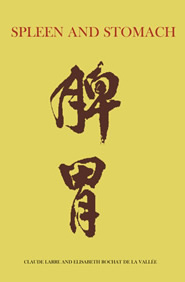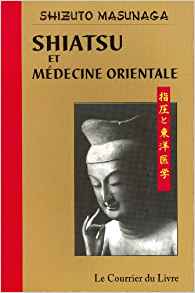Description
[:fr]Claude Larre and Elisabeth Rochat de la Vallée
This book presents a full examination of the eight extraordinary meridians from the texts of the Neijing (The Yellow Emperor’s Inner Classic), the Nanjing (The Classic of Difficult Issues), and their commentaries.
The first section gives an overview of the eight as the template of the interaction of yin and yang within the body, providing the foundation for the movement of qi and the underlying framework for the main meridian system.
There follows a detailed description of the du mai, the governor vessel, with a study of the point names as a key to its functions. The ren mai, chong mai and dai mai are then presented, building up a simple structural picture of the body which is further elaborated in presentations of the qiao and wei mai. Each Chinese meridian name is discussed, looking at the etymology and nuances of meaning, and giving fresh insight into the function of these eight extraordinary meridians. Classical descriptions of points and pathways are explored in depth.
An index of Chinese characters and main concepts is included.
These meridians are older, more ancient than the ordinary meridians, and when extraordinary circumstances exist outside, and the twelve main meridians can no longer ensure the maintenance of the twelve areas of the body, there is a return to a more ancient and deeper regulation of life. Here we have one of the meanings of these extraordinary meridians and of their role: it is to preserve the norm, but at a deeper level.
Elisabeth Rochat de la Vallé[:en]Claude Larre and Elisabeth Rochat de la Vallée
This book presents a full examination of the eight extraordinary meridians from the texts of the Neijing (The Yellow Emperor’s Inner Classic), the Nanjing (The Classic of Difficult Issues), and their commentaries.
The first section gives an overview of the eight as the template of the interaction of yin and yang within the body, providing the foundation for the movement of qi and the underlying framework for the main meridian system.
There follows a detailed description of the du mai, the governor vessel, with a study of the point names as a key to its functions. The ren mai, chong mai and dai mai are then presented, building up a simple structural picture of the body which is further elaborated in presentations of the qiao and wei mai. Each Chinese meridian name is discussed, looking at the etymology and nuances of meaning, and giving fresh insight into the function of these eight extraordinary meridians. Classical descriptions of points and pathways are explored in depth.
An index of Chinese characters and main concepts is included.
These meridians are older, more ancient than the ordinary meridians, and when extraordinary circumstances exist outside, and the twelve main meridians can no longer ensure the maintenance of the twelve areas of the body, there is a return to a more ancient and deeper regulation of life. Here we have one of the meanings of these extraordinary meridians and of their role: it is to preserve the norm, but at a deeper level.
Elisabeth Rochat de la Vallé[:]





